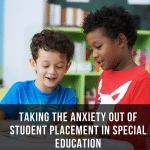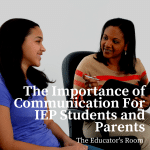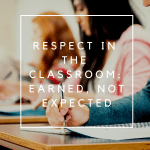 There has been the great controversy for many years over the inclusion of special education students in the regular education classroom. Some parents are afraid that inclusion students will negatively impact their child’s education. Mainstream education teachers sometimes voice concerns over whether or not they can teach these students when they have no background in special education. Special education teachers often are concerned that “their” students will be lost in a regular classroom. What I believe everyone should be thinking about is how we best educate all students.
There has been the great controversy for many years over the inclusion of special education students in the regular education classroom. Some parents are afraid that inclusion students will negatively impact their child’s education. Mainstream education teachers sometimes voice concerns over whether or not they can teach these students when they have no background in special education. Special education teachers often are concerned that “their” students will be lost in a regular classroom. What I believe everyone should be thinking about is how we best educate all students.
As I discuss the good and bad experiences that I had with inclusion students in my own classroom, I’d like you to think about the following information. Albert Einstein was non-verbal until he was almost four years old and couldn’t read until he was almost nine. Thomas Edison was partially deaf and unable to read until the age of 11. Agatha Christie was the most famous mystery novelist of her time. Christie had dysgraphia, a learning disability that affected her ability to understand written words.
While most teachers may not know this, they have already had inclusion students in their classroom. You see under IDEA, parents must give initial consent for testing to be conducted and this consent can be withdrawn at any time. If special education services are determined to be necessary, the parent must give consent for the child to be placed. If the parent refuses to give consent, the child cannot receive special education services.
The middle school in which I taught had self-contained special education classes of every kind. These classrooms were not isolated away from the regular education classes but placed next door to regular classes so that all of the students could interact in the halls and lunchrooms. I had been teaching a few years when I was first approached by a special education teacher (Socially and Emotionally Disturbed no less) who wanted me to allow one of his students to join one of my math classes. At that time a student in 8th grade who was not included in a regular classroom would move on to high school, remaining in a self contained special education class until graduation. The agreement that we made was that if this young man could not function in my class he would return to his self contained class. To my surprise not only did he do better in math than many of my other students, he exhibited no behavior problems. He integrated so well into my math class that he was switched to my advisory and was able to finish out the school year in regular education classes. He went on to high school and graduated on time. This success caused me to take other special education students into my class voluntarily for years.
Unfortunately, things would change dramatically when we got a new principal who decided that the IDEA concept of “least restrictive environment” meant take all children who were functioning reasonably well in a sheltered situation and place them in regular classrooms at the beginning of November. In order to do this and keep class size equitable, some regular education students had to be moved out of their classes virtually disrupting every 8th grade class in the building. To make matters worse, the resource specialist who had been teaching this self contained class was now running around the school doing pull out support for students who should never have been placed in a regular classroom. One student in particular who happened to be in my Algebra 1 class, spent much of his time rocking and sucking his thumb because he was overwhelmed by this new situation. His former teacher had begged the principal not to put him there because it violated his IEP, but the principal kept repeating “least restrictive environment” for everyone in that class whenever this child’s situation came up. What we found out later that year was that the principal was not concerned about “least restrictive environment for the children, she wanted to be able to drop a special education teacher to save money for something else that she felt took precedence.
What my classroom experience taught me is that inclusion can work very well if the teachers involved have some say in the situation, if it is not a permanent inclusion until all parties feel that it is working, and in particular if the child being included wants to try it. What my final experience with inclusion taught me is that inclusion can’t be done without preparing all of those involved before the decision is made and that it can’t be done to save money because then all of the children are harmed.
In conclusion, I am a proponent of inclusion, if it is appropriate for a given child and handled properly. Our world is changing quickly and all students need to get along with many different types of people. Inclusion in school can ease our children into getting along with those who are different from them as adults. And remember, you child might actually be going to class with the next Einstein!






